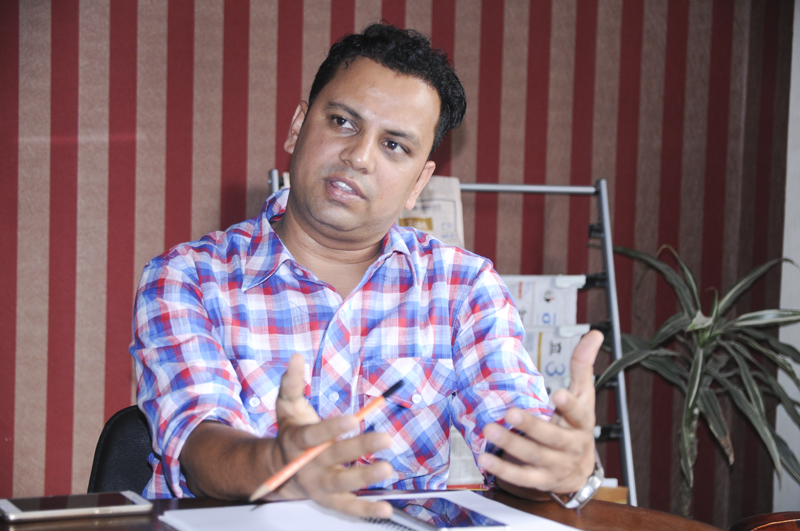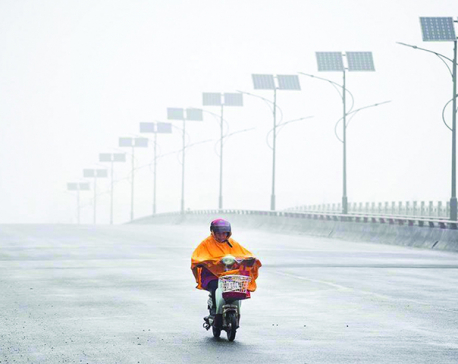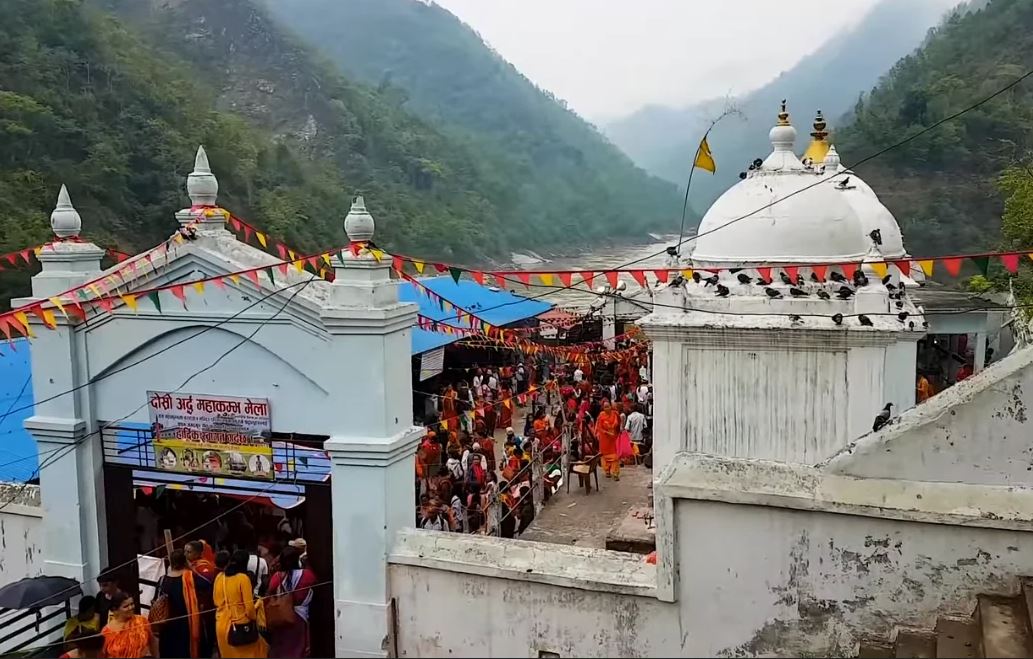
OR

Who knew it would be amusing to learn about the number of registered vehicles in the valley or enlightening to find out the exact amount our government has spent on the medical treatments of each political leader, but they are the kind of facts that FACTS Research & Analytics Pvt. Ltd. has been sprinkling our days with for the last four years. Their rigorous effort to share statistics and increase awareness has earned them quite the reputation and followers as well.
So much so that last month they released the third edition of their annual compilation of infographic data. The book, Facts of Nepal: 2017, is currently available in the market and Manish Jha, General Manager of the organization, here talks about their experience of putting it together.
What was the motive behind publishing this book?
Twenty-five percent of our organization’s total operation is dedicated to data dissemination. This has been our priority ever since we established ourselves back in 2012. It’s partly because when we began, there were already multiple registered research companies in town. To get ahead of competition, we tried to focus on what they weren’t providing.
We quickly discovered that the trend among our research companies was to only provide their clients with the data and findings. So, we decided to make a conscious decision to reach out to the masses. While we don’t share information specifically collected for our clientele, there are other issues and sectors that we can shed a spotlight on.
Eventually we really want to help develop a culture of research. When we share these various statistics, we discovered that it helps generate people’s interest on data. Hopefully, publishing booklets like this will help encourage and instill the culture of evidence-based research.
So you think lack of research culture is a pressing issue here in our country?
I’m not worried about competitors coming up. What worries me the most are those people sticking to their traditional beliefs and dismissing the importance of research. Be it on a personal level to develop an all around perspective or on a national level for effective decision-making, one requires accurate data. But most are still careless about this.
For instance, whenever asked about the population of the capital, many Nepalis tend to say that it’s around 3,000,000 to 4,000,000. But there is a 25% difference between those two numbers. It’s time we stop stating things and developing opinions based on hunches. While many students and people abroad are capable of having elaborate discussions about their GDP, I have met Master level students here who weren’t even aware about the population of our country. We don’t talk about data and statistics here in Nepal. It’s surely a problem. So, we are volunteering to educate the public as well as the politicians.
Since this is the third volume of Facts of Nepal, how has the response been so far?
Last year, we had distributed our booklet for free at many places, from conferences to exhibitions. The effort seems to have paid back this year. There has been a lot of interest from the development and education sectors as well as, rather surprisingly, various embassies.
Some from the Nepali private sector have also been giving the booklet some attention, but not as much as I wished they would. The I-know-everything attitude still prevails among many people and they don’t think this kind of researches and data are important. It’s a bit of a shame, really.
How did you decide which sectors were important enough to be featured?
It’s all based on how much interest there is around certain issues. For example, last year’s booklet had a lot of material on the earthquake, disaster preparedness and rehabilitation, economy and so on.
This year we focused a lot on tourism and aviation because there was a lot buzz in these sectors in 2016. So naturally, they became relevant. Similarly, there have been many changes in traffic disciplines lately so we have included various statistics on the matter as well.
Then, there are a couple of topics that are always in discussion: politics, economy. As far as security and communication were concerned, we decide to carry out researches on them because they are relevant.
Is there any sector that has proven to be too big for your organization to cover?
It has to be the ones related to the government and their different administrative processes. Just recently, the Health Minister shared the conundrum in a speech at the Nepal Literature Festival. He was talking about how the ministry generated the most employment opportunity. Apparently, the number of volunteer health workers alone is about 60,000.
His ministry is the only department that has more than 100,000 employees, but he went on to confess that, despite its contribution, he didn’t know the category, department or capacity in which these workers were operating. These factors have been left undocumented for so long that it will take a lot of time and resources to just bring it all together.
Not so long ago, a Japanese company had expressed their wish to invest in the health sector and wanted our help with the research but we had to tell them that we could only provide secondary data.
What goes into complying data for booklets like these? How do you make it reliable?
We have a team of 20 in Kathmandu and a coordinator in each major city around the country. Once we identify the sectors, we divide groups and each of them keeps tabs of their respective sectors. We don’t merely rely on information already present in the media or other journals and books. We make it a point to figure out the situation on field as much as possible. At the very least, we contact various departments and ministries related to the sectors to collect their data and then we cross check them all.
In the four years, that we have been operating, there have been instances where we have had problems with authenticity. Since the data culture in our country is still weak, we have learnt the importance of double checking our sources. Also we have cited these sources in each of the infographics and photos in the booklet in hopes of ensuring reliability.
What’s been some of the major challenges in these data collection processes?
To start with, there is the challenge of enforcing the importance of these kinds of data collection. We just have to look at our government’s budget. Barely three percent of it has been dedicated to research and this is astoundingly low compared to other countries. In fact, Philips Company alone has more budgets separated for research and development than we do as a country. Let’s not even talk about Samsung or LG that are bound to have even more.
So to put things in perspective, if an electronics company spends more on research, we can bet many Nepalis haven’t understood the importance of these statistics. So whether it’s requesting cooperation to collect information or encouraging their use, there are challenges at every step. We hope to eventually overcome them.
(As told to Priyanka Gurung)

You May Like This

Truth of global warming
Climate change seems to freeze our capacity for critical thinking: We are too eager to believe the problem is far... Read More...

‘Facts of Life’ star Charlotte Rae dies at 92
LOS ANGELES, Aug 6: A spokesman for Charlotte Rae, who played a wise and caring housemother to a brood of... Read More...

Trump to meet US spy chiefs to get Russian hacking ‘facts’
US President-elect Donald Trump has responded to a slew of US election related sanctions against Russia with a call for... Read More...

Just In
- Over 200,000 devotees throng Maha Kumbha Mela at Barahakshetra
- Indians vote in the first phase of the world’s largest election as Modi seeks a third term
- Kushal Dixit selected for London Marathon
- Nepal faces Hong Kong today for ACC Emerging Teams Asia Cup
- 286 new industries registered in Nepal in first nine months of current FY, attracting Rs 165 billion investment
- UML's National Convention Representatives Council meeting today
- Gandaki Province CM assigns ministerial portfolios to Hari Bahadur Chuman and Deepak Manange
- 352 climbers obtain permits to ascend Mount Everest this season






_20220508065243.jpg)











Leave A Comment